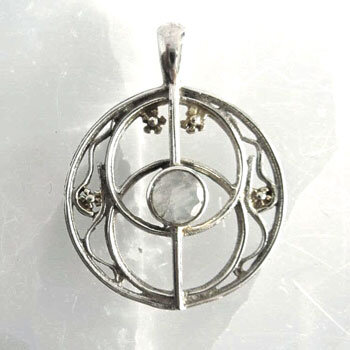St. Brigit, Feast of Imbolc
Many of you have purchased beeswax candles made by my twin sister, Beth, a beekeeper-farmer in New Mexico. She sent along this reflection which inspired me to share some background on Brigid of Ireland, whose feast day is celebrated today.
St. Brigid's Cross, New Mexico-Style
"Today I celebrated the Celtic feast of St. Brigid--by making her cross, which in Ireland is fashioned out of green rushes. Since nothing is green here yet,
I made mine from wheat straw . St. Brigid's celebration is on Imbolc--halfway between winter solstice and spring equinox, and look around you and you'll see tiny signs of spring. I have little crocuses hesitantly pushing up out of the ground. The lettuces in the hoop house are finally growing. Sheep will be lambing any day.
Soon the elms will bloom with pollen and the bees will be thankful, even if the elms aren't native! Neither are the honeybees. Just native to the Earth.
I celebrate this day, as she is patroness of chicken farmers, dairymaids, fugitives, fishermen, midwives, babies, sailors, scholars, travelers, creativity scholars and poets.
There! I think that covers everybody!"
Beth Crowder
Sparrow Hawk Farm
February 1, 2021
The Goddess Brigit came out of a time of pure light when the sun was worshiped as feminine. She came as a woman of poetry, healing, law, smith’s work, and fire. Her name was Breo-saighit, a fiery arrow. When her son was killed in an unfair war of divine politics, she shrieked and cried, thus introducing keening. She was, at once, a triple Goddess and the amalgam of all the ancient Celtic Goddesses.
Brigit’s feast day was Imbolc, celebrated on or close to February 1st, marking the end of the darkness in the northern hemisphere and the coming of the light and Spring, the mating of livestock, the planting of crops, fertility, and the re-emergence of new and abundant life. It is no accident that the word Imbolc means “milking.” Brigit and the land were one and the same and she was given homage in the landscape, oak groves and holy wells across Ireland. Her priestesses tended her holy and eternal flame in exclusively female sanctuaries such as Cill Dara (Kildare).
In the early days of Christianity in Ireland, the Goddess Brigit became the miracle-working Brigit (450 C.E. - 525. C. E.)who shares many of her attributes and talents with her ancient sister, the Goddess. Whatever the Goddess could do, it seems St. Brigit could do better. Although St. Brigit is claimed by the Church as a Christian saint, she is the bridge between the older matrifocal nature religion and the new religion. One legend records she was born in the doorway, literally on the threshold, of a house belonging to a Druid, demonstrating that she was born on the threshold of two religious traditions and on a boundary or a thin place between the worlds.
St. Brigit understood the importance of spiritual relationships while establishing religious communities across the face of Ireland. She wielded the authority of a woman-bishop and disregarded the laws regarding women and boundaries. The land of Ireland was her sacred space and remains so today in the traditions of Imbolc or St. Brigit’s Day. Although many of her traditions are forgotten in contemporary post-modern and increasingly secular culture, even modern people continue to seek her out at her holy wells which still dot the Irish landscape. At the Sisterhood of St. Brigid of Kildare, the nuns continue to tend a sacred flame, pray, run a center for Celtic Spirituality and work for peace, justice, and reconciliation. St. Brigit is an embodiment of the continuity of the creative Divine Feminine and Holy Wisdom the patriarchy has never managed to completely silence or eliminate: the Holy Woman, the Bright one, the Exalted One.
In gratitude for an article by Ronnie T. Stout-Kopp
With permission https://thewildgeese.irish/





